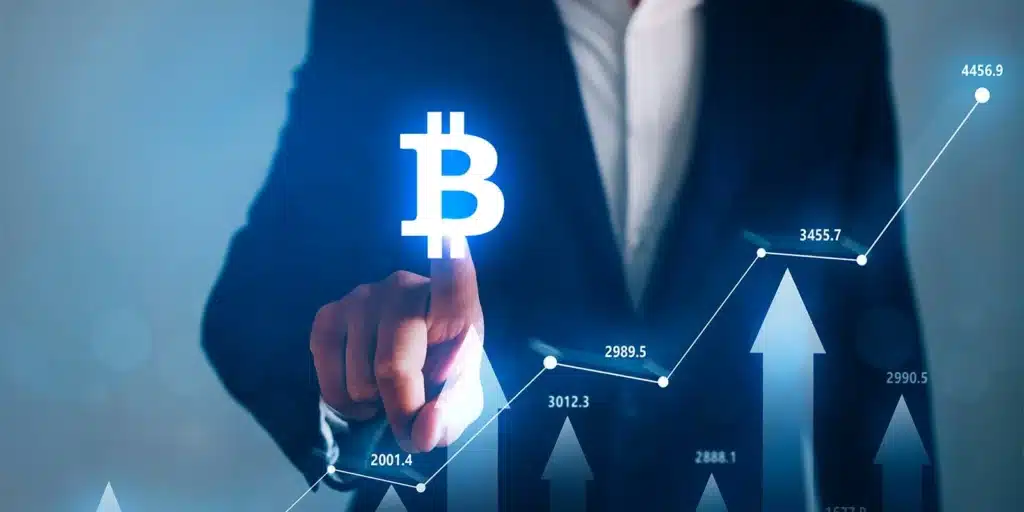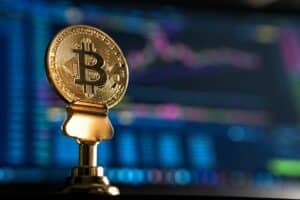Crypto market makers are key players in the cryptocurrency industry. They act as intermediaries between buyers and sellers, providing liquidity to markets and enabling trading activity.
Market makers provide two services. They quote both bids (buy) and ask (sell) prices and take on the risk of holding assets by acting as a counterparty. They help reduce transaction costs, increase market efficiency, and improve asset price discovery.
As a crypto business owner, understanding market makers is essential for success. Here are some key things to know:
Contents
Definition and Function of Market Makers
Crypto market makers, as the term suggests, ‘make a market’ by providing liquidity to the markets. They are typically large financial institutions or trading firms with significant resources.
In the crypto market, they operate by constantly quoting both a buy (bid) and a sell (ask) price on a particular cryptocurrency. Their function is twofold: to ensure that trades can be made at any time and to keep the markets efficient by minimizing the spread between the bid and ask prices.
Liquidity provision is a significant aspect of a market maker’s role. They maintain a balanced order book with a constant supply of buy and sell orders. This ensures that traders can transact whenever they want without causing significant price movements.
This ability to trade will promote market participation. This ultimately increases the overall liquidity and stability of the crypto market.
Market Maker Strategies
To maintain balanced order books and manage their risks, market makers employ several strategies. Primarily, they manage risk by ensuring they have both buy and sell orders for a particular cryptocurrency at all times.
This keeps their inventory balanced, mitigates exposure to price fluctuations, and helps to maintain the price spreads between the buy and sell orders.
Market makers may utilize arbitrage strategies to take advantage of price differences across different crypto exchanges. They buy the asset from an exchange where the price is lower and sell it where the price is higher, thereby profiting from the price discrepancy.
Statistical models are another common tool used by market makers. They use these models to predict price movements and trade volumes based on historical data and market trends. This information helps them adjust their bid and ask prices to reflect market conditions and manage their order book efficiently.
Lastly, market makers analyze the order book to gauge market sentiment and anticipate price movements. For instance, a heavy skew of buy orders might suggest an upcoming price rise, prompting the market maker to adjust their quotes accordingly.
Role in Liquidity Provision
Market makers are vital for providing liquidity in the crypto market. By continuously placing buy and sell orders, they bridge the gap between buyers and sellers. This constant flow of orders ensures there’s always someone to match a trade, resulting in increased trading volumes.
High liquidity is beneficial as it leads to price stability.
With more orders in the market, individual trades have less impact on the overall price of a cryptocurrency. This dampens price volatility and reduces the risk of market manipulation, as it requires more capital to influence the price in a highly liquid market.
Moreover, by contributing to the depth and breadth of the order book, market makers help create a more equitable and efficient trading environment.
Impact on Market Dynamics
Market makers have a profound impact on market dynamics. By constantly offering to buy and sell, they help narrow the bid-ask spread.
This refers to the difference between the highest price a buyer is willing to pay (bid) and the lowest price a seller is willing to sell (ask). A narrower spread indicates a more liquid and efficient market, beneficial for traders as it reduces the cost of trading.
Market makers also contribute to market depth, which is the market’s ability to absorb sizable orders without affecting the price significantly. A market with good depth is more stable and less susceptible to price manipulation.
However, market makers can influence price volatility. The concept of tight and wide spreads comes into play here. A tight spread often correlates with low volatility, while a wide spread can indicate high volatility.
Market makers strive to maintain tight spreads. However, various factors, like market sentiment or news events, can cause wider spreads.
Market Maker Fees and Incentives
Market makers earn profits through a combination of fees and incentives. Primarily, they make money off the bid-ask spread – buying low and selling high.
However, exchange fee structures also greatly influence market maker profitability.
Exchanges often employ a maker-taker fee model, which impacts market maker behavior and overall market liquidity. In this model, ‘makers’ are those who add liquidity to the market by placing limit orders, while ‘takers’ are those who take liquidity away by placing market orders.
Typically, makers are offered lower fees or even rebates, incentivizing them to contribute more to the order book enhances market liquidity.
Risks and Challenges Faced by Market Makers
Market makers in the crypto market face several risks in trading cryptocurrency. One of them is the volatile nature of these digital assets.
High volatility can result in substantial losses if market makers fail to balance their order books effectively.
Regulatory uncertainty is another major challenge. Given the global and decentralized nature of cryptocurrencies, differing regulations across jurisdictions can complicate operations.
Regulatory clampdowns or sudden changes in policy can disrupt market maker strategies and affect profitability.
Technological limitations also present challenges. Market-making requires sophisticated algorithms and lightning-fast execution speeds. Any lag or error in the system can lead to significant financial loss.
To manage these risks, market makers use various strategies. For volatility, they maintain a balanced inventory and use hedging techniques.
To navigate regulatory uncertainty, they often operate in jurisdictions with clear regulatory frameworks and adapt to regulatory changes as required. They also invest heavily in cutting-edge technology and IT infrastructure to ensure efficient and reliable trading operations.








